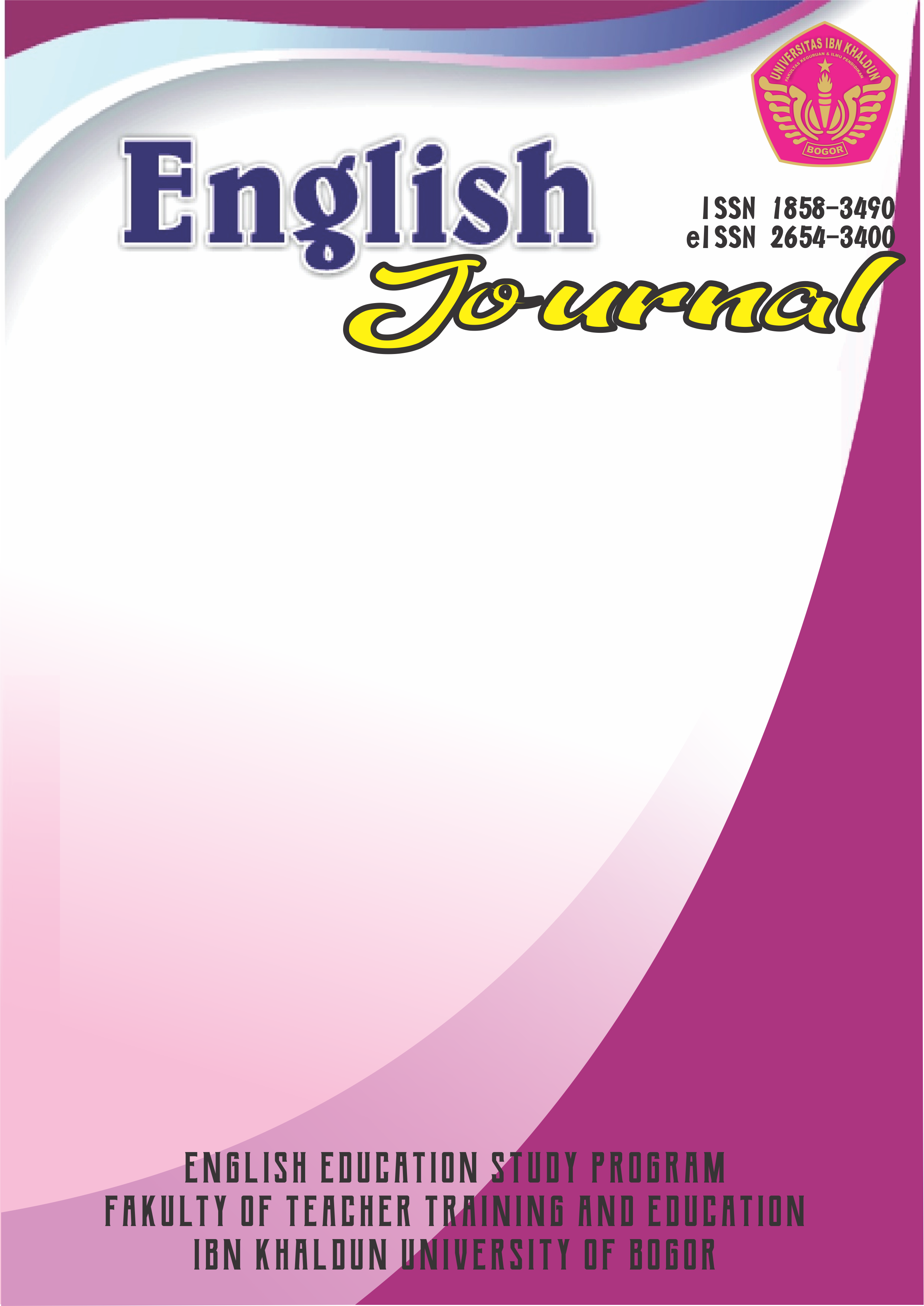FOSTERING STUDENTS' EXPERIENCES IN ENGLISH WRITING WITH MICROBLOGGING IN TWITTER
DOI:
https://doi.org/10.32832/english.v13i2.3783Abstrak
Twitter and Microblogging are two separate entities but completes each other. Both of them can be used as language learning tools and their potential has been proved by several scholars. This study tries to examine students' experiences in integrating microblogging with twitter. It is also study about the beneficial roles of microblogging with Twitter in language learning, its relation to writing, and its appropriateness in language learning. This study employs a qualitative research methodology, and case study as its research design. Semi-structured interviews and questionnaires were employed in this study to find out about participants' views about microblogging and Twitter. From this study, it can be concluded that the participants of the study underwent various experiences during the implementation of microblogging with Twitter. They also felt that microblogging with Twitter at some point advantages them to systematically arrange their ideas, and allows them to choose appropriate diction of their ideas. They also stated that Twitter can be an appropriate means in language learning, especially in English writing.Referensi
Antenos-Conforti, E. (2009). Microblogging on Twitter: Social Networking in Intermediate Italian Classes [en línea]. The Next Generation: Social Networking and Online Collaboration in Foreign Language Learning (59-90) Disponible en http://chss. montclair. edu/~ antenose/mytwitter. pdf [14/11/2015].
Aydin, S. (2014). NOTE FOR EDITOR: Twitter as an educational environment. Turkish Online Journal of Distance Education, 15(1), 10-21.
Borau, K., Ullrich, C., Feng, J., & Shen, R. (2009, August). Microblogging for language learning: Using twitter to train communicative and cultural competence. In International conference on web-based learning (pp. 78-87). Springer, Berlin, Heidelberg.
Cresci, S., Di Pietro, R., Petrocchi, M., Spognardi, A., & Tesconi, M. (2015). Fame for sale: Efficient detection of fake Twitter followers. Decision Support Systems, 80, 56-71.
De Larreta-Azelain, C. (2013). LEARNERS ATTITUDE TOWARD COLLABORATIVE WRITING IN E-LANGUAGE LEARNING CLASSES: A TWITTER PROJECT FOR GERMAN AS A FOREIGN LANGUAGE. Revista Española De Lingüística Aplicada (RESLA (Revista Espanola De Linguistica Aplicada)), 26.
Geser, H. (2009). Tweeted thoughts and twittered relationships. Sociology in Switzerland: Toward Cybersociety and Vireal Social Relations.
Hsu, Y. C., Ching, Y. H., & Grabowski, B. L. (2014). Web 2.0 applications and practices for learning through collaboration. In Handbook of research on educational communications and technology (pp. 747-758). Springer, New York, NY.
Jabbarova, A. (2020). DIFFICULTIES IN TEACHING ESSAY WRITING IN ENGLISH. Ðрхив Даучных Публикаций JSPI.
Lomicka, L. (2017). Twitter and Micro-Blogging and Language Education. Lang. Educ. Technol., 1-12.
Taskiran, A., Gumusoglu, E. K., & Aydin, B. (2018). Fostering foreign language learning with Twitter: Reflections from English learners. Turkish Online Journal of Distance Education, 19(1), 100-116.
Wang, D., Marshall, J., & Huang, C. (2016, March). Theme-relevant truth discovery on twitter: An estimation theoretic approach. In Icwsm (pp. 408-416).
Yin, R. K. (2018). Case study research and applications.

















1.png)




